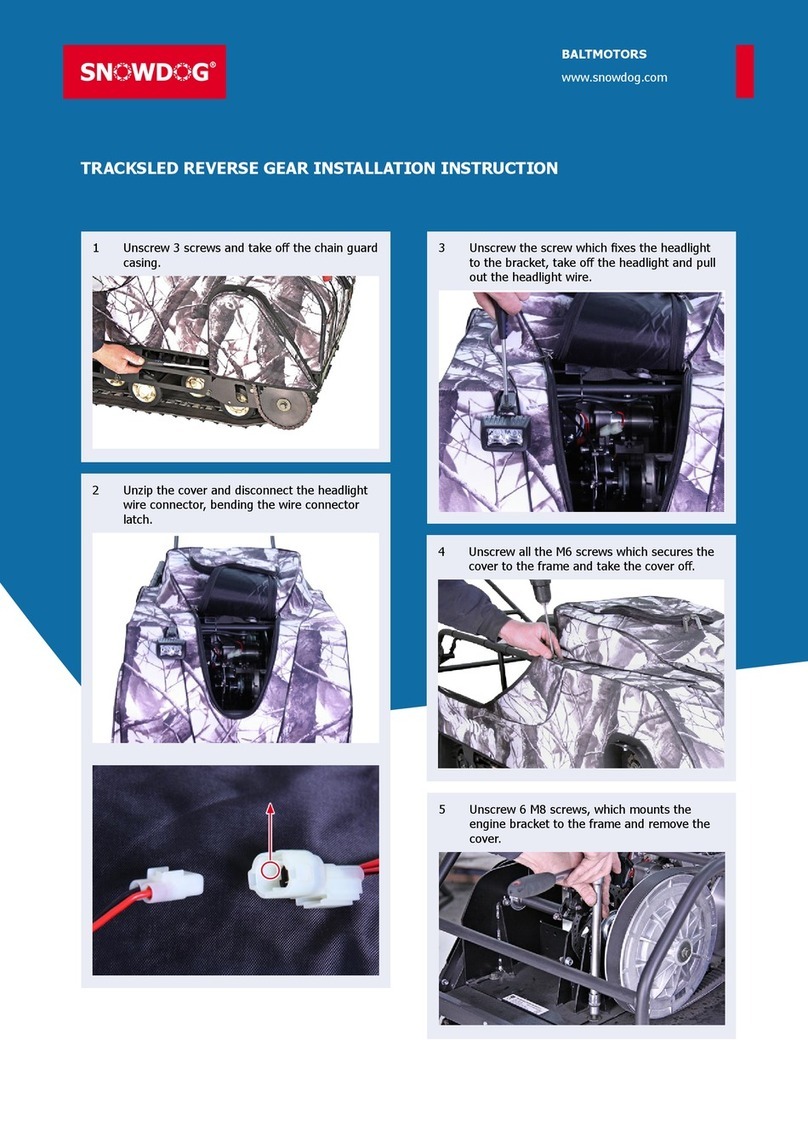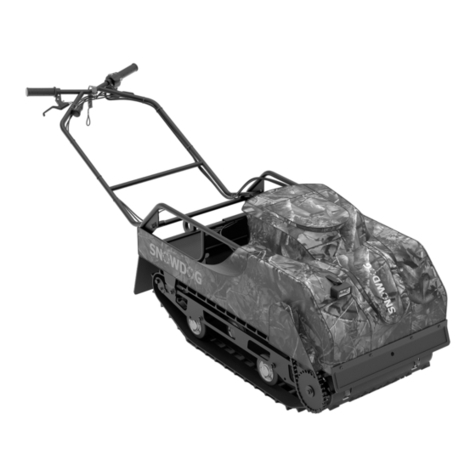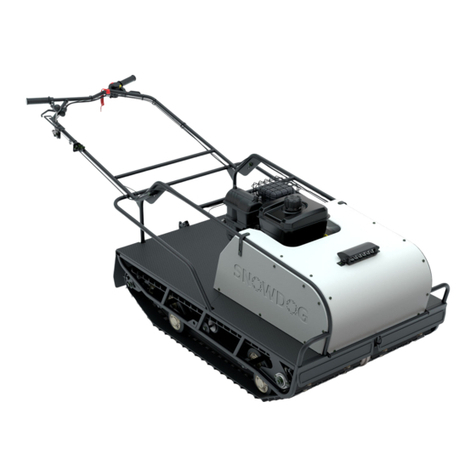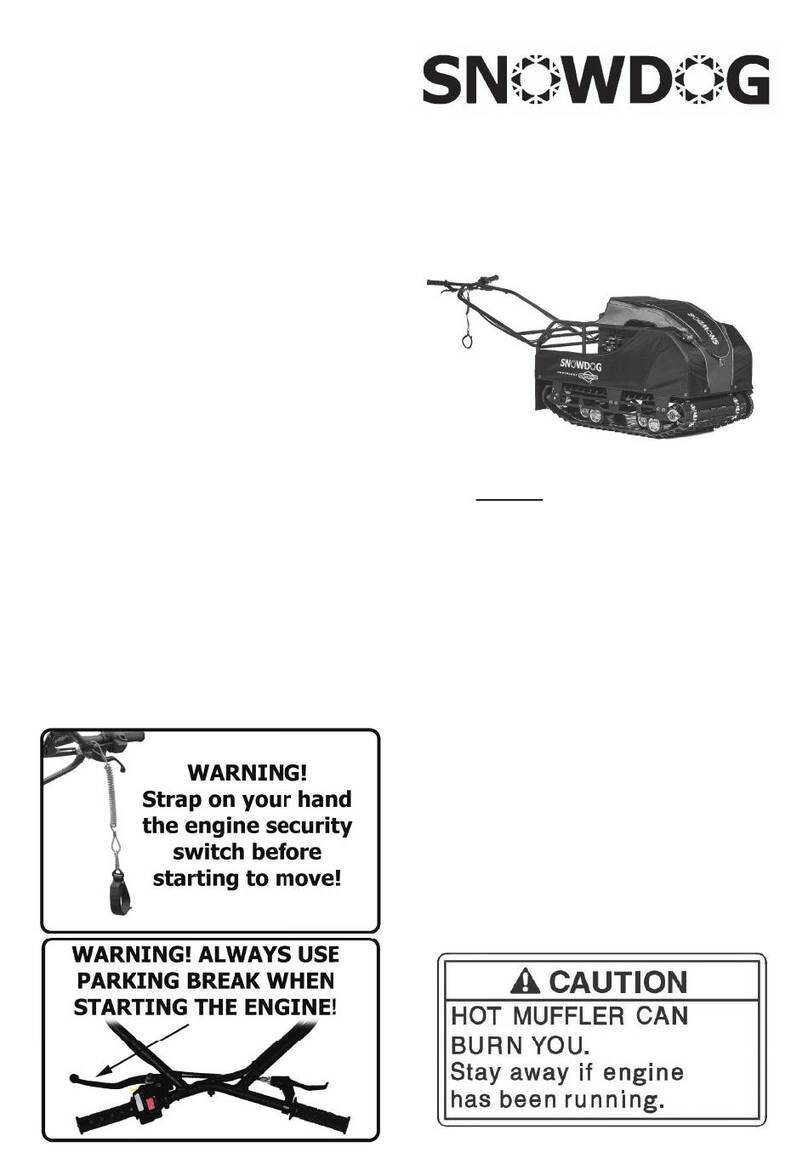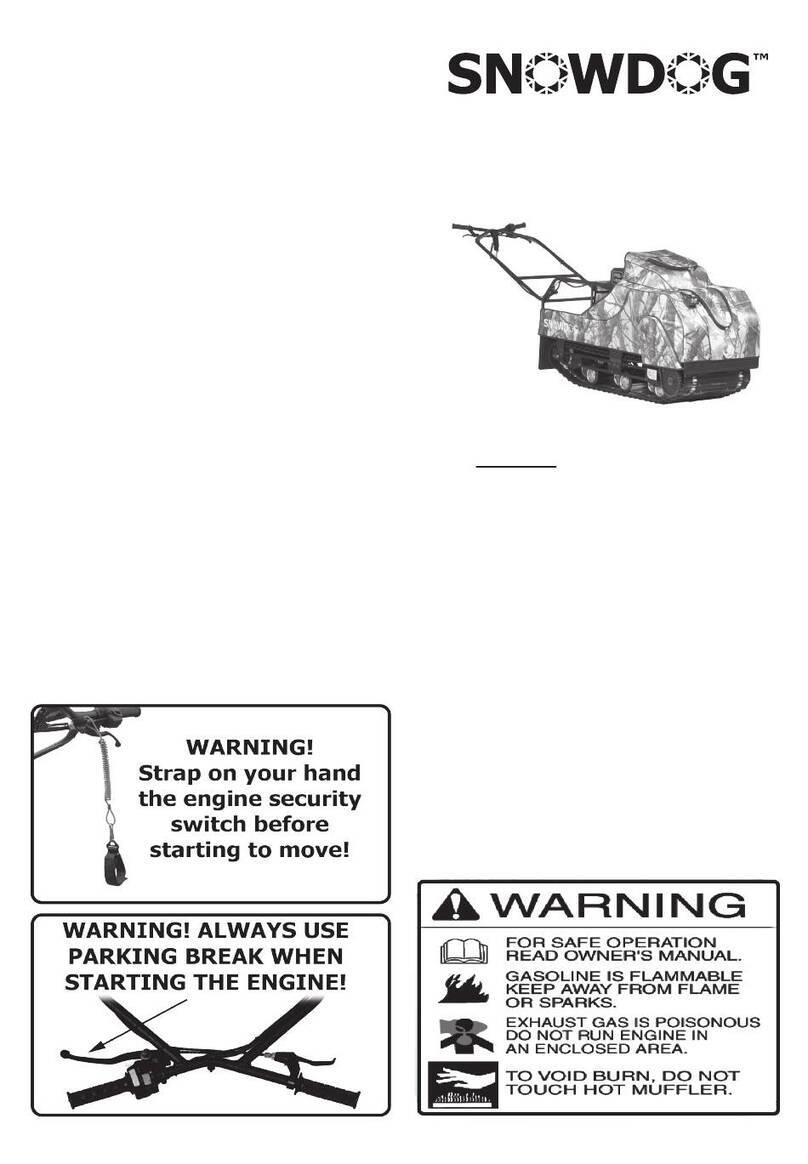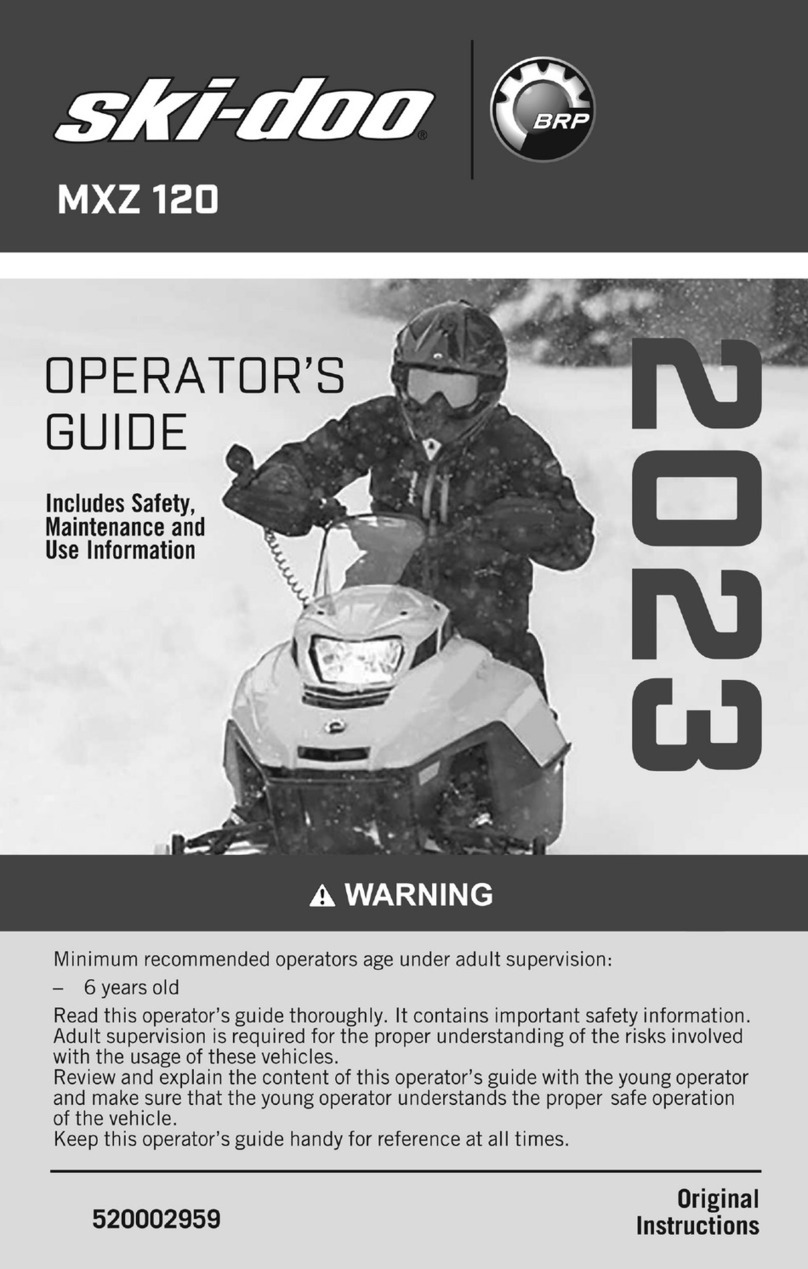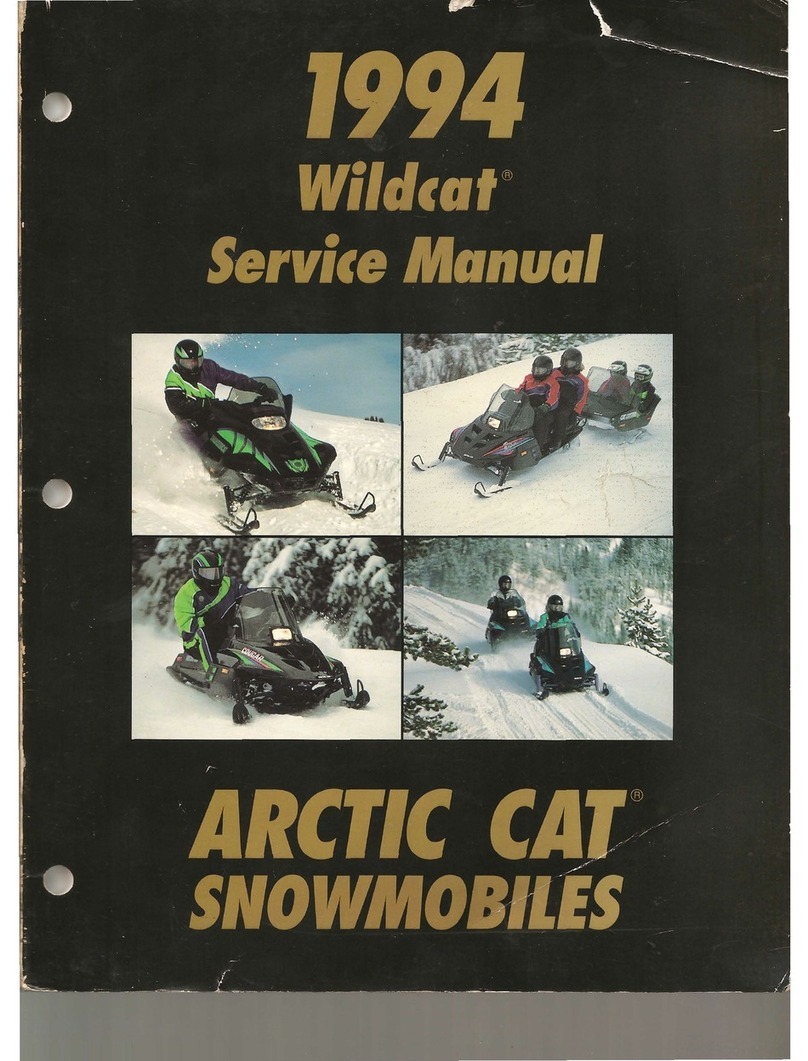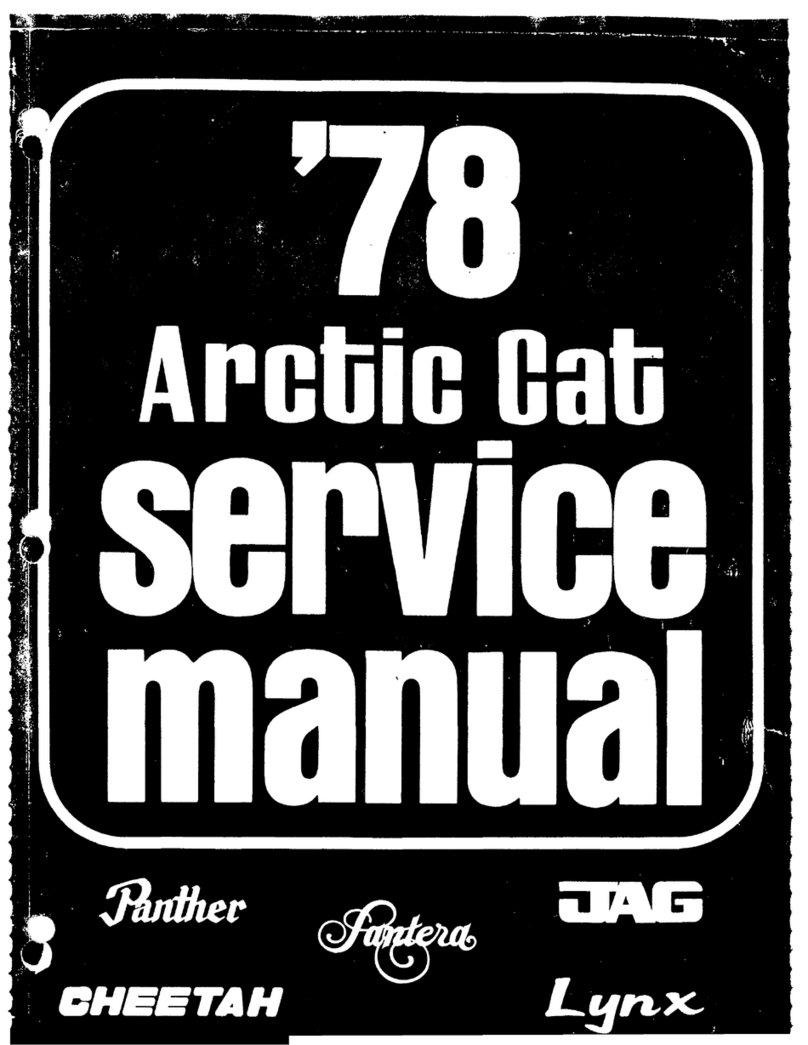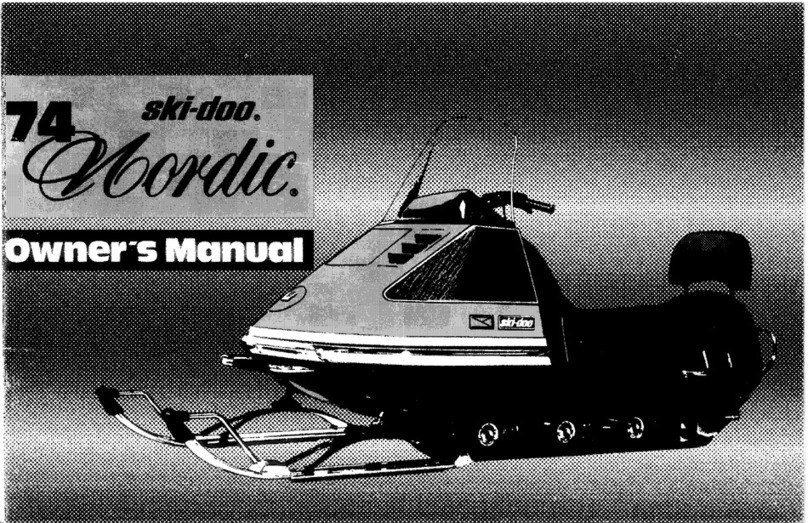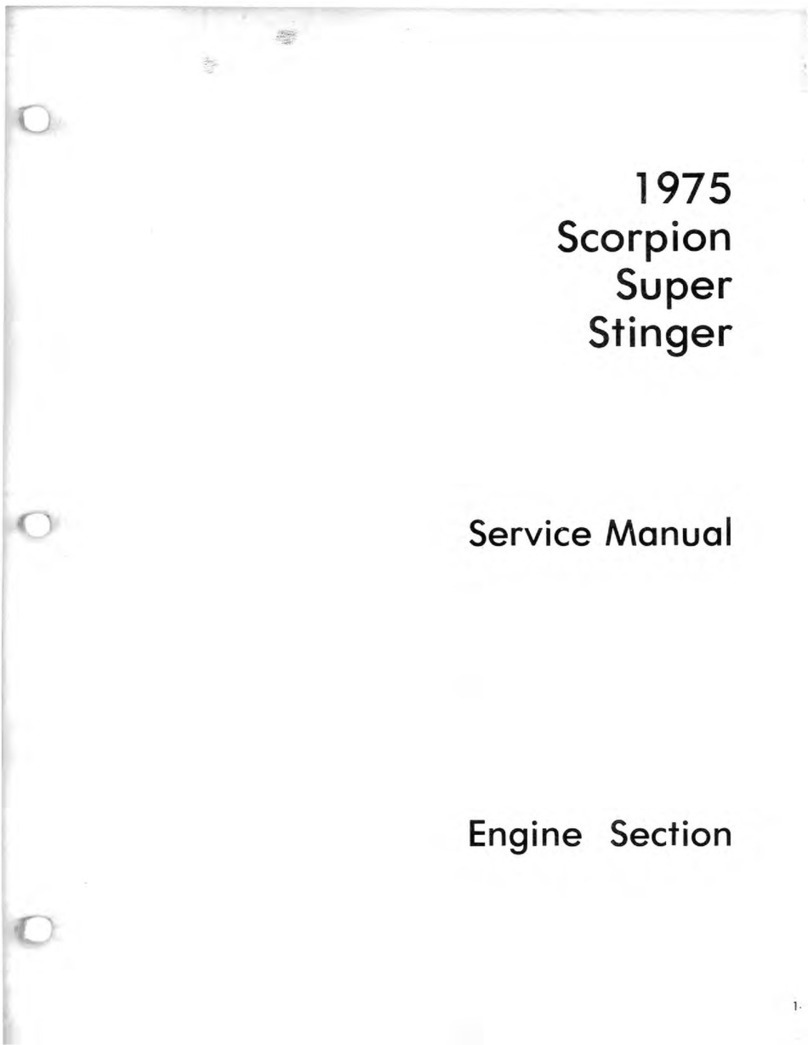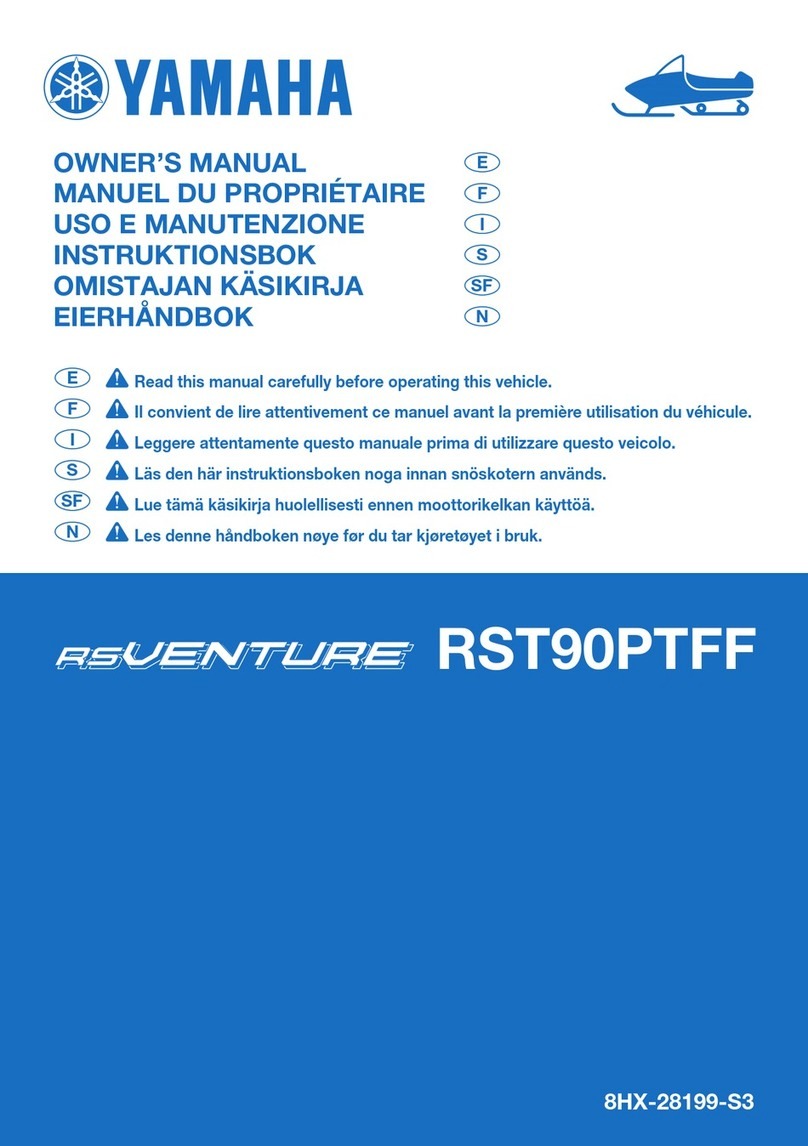9
5. Visually check the driver and driven shafts of the CVT,
clean out of dirt if necessary. Be sure to check for
plastic inserts (1) in CVT driver shaft. If plastic inserts
are missing or worn out — insert new ones.
11.3 After the first 5 hours of SNOWDOG
operation
1. Lubricate the throttle and parking brake cables.
2. Lubricate the drive chain and sprockets with
an aerosol chain spray.
3. Adjust throttle and parking brake arms (free motion
should have a value of 0.19 – 0.27 in (5–7 mm)).
4. Adjust the chain tension.
5. Service the engine as specified in the operating
manual of the engine.
6. Visually check the track tension.
11.4 After each 20 hours of SNOWDOG running
1. Lubricate the throttle and parking brake cables.
2. Lubricate the drive chain and sprockets with an
aerosol chain spray.
3. Adjust throttle and parking brake arms (free motion
should have a value of 0.19 – 0.27 in (5–7 mm)).
4. Adjust the chain tension.
5. Check the track tension as described in paragraph
13.3.
6. Change the engine and transmission oils.
7. Lubricate the bearings in supporting rollers via service
hatch.
8. Service the engine as specified in the operating
manual of the engine.
!WARNING
• When operating under heavy duty conditions
the maintenance should be carried out more
often.
• Heavy duty operating conditions include:
- Moving on deep loose snow (more than 16 inches
in depth).
- Moving at temperature below -13 and above 50
degrees Fahrenheit.
- Moving on wet snow and on snow containing
water.- Moving on surfaces flooded by water.
- Moving on rocky terrain.
- Moving on snow crust which cannot withstand
the weight of the tracksled and sleds.
- Participation in races and competitions.
- Prolonged moving at low speed, “tightly
strained”.
- Moving with a towed load more than 330 lbs.
- Moving on hard-surfaced roads.
- Moving in mud.
- Moving in sand.
- Prolonged moving uphill, downhill, or on slopes.
- Short trips with frequent stops.
11.5 Washing and cleaning
Before washing and cleaning, remove the cover if
necessary. Wash cover, if necessary.
Do not use high pressure for washing, it may damage
some parts of SNOWDOG.
SNOWDOG should be washed with warm water and car
detergent. Thoroughly rinse the detergent.
Wash using a bucket with a sponge or small water pressure
hose. It is necessary to ensure that water is not suffused in
parts, connectors and switches on the engine, in (on) the air
filter and muffler. Do not use petrol or other solvents to clean
the plastic and painted surfaces. Powertrain and chassis must be
cleaned of twigs, leaves and other contaminants. Remove stains
of oil and other fluids.
Start up and warm up the SNOWDOG after washing.
!WARNING!
Do not allow corrosive substances on the
track, such as gasoline, solvents, acids, etc.
12 Storage
SNOWDOG should be stored in a dry ventilated room or
outdoors under a canopy with a waterproof cover.
In case of a short-term storage (up to one month), perform
the procedures specified in paragraph 11.4.
In case of a long-term storage (over a month) perform
all the procedures specified in paragraph 11.4 and lubricate
non-coated parts with a preserving agent, as well as the parts
where paint-and-lacquer coating is exposed. This ensures the
safe preservation of the SNOWDOG for up to 12 months when
stored normally. For the next 12 months of storage, reproduce
the steps above. To do so, follow the engine depreservation
procedures specified herein, remove the preserving agent from
the parts, fill the tank with gas, start the engine and let run for
5 minutes, then stop it, change the engine oil, and preserve the
SNOWDOG for another period.
Also follow the engine manufacturer recommendations for
long-term storage.
12.1 Track maintenance
Check the track condition and its tension after each trip.
Excessive track tension is often the reason for power loss and
causes engine overload.
Never operate the SNOWDOG with severe track damage.
In case of severe track damage, you should seal it to prevent
moisture from ruining the track’s cord.
The cord threads should not stick out of the track’s side.
If they do, cut them off.
Check the track’s metal brackets after each trip. If bent,
straighten. If a bracket is missing, replace it. Operating damaged
tracks leads to their rapid deterioration.
Inspect and clean the track after each trip.
When operating the SNOWDOG in the wet snow, clean the
track more often, especially before a prolonged stop. Do not
expose the track to oil and various chemicals.
Do not store the SNOWDOG under direct sunlight.
Loosen the track before storage.
We recommend storing the SNOWDOG in suspended
position. In case of a long-term storage the track must be
rotated to a new position once a month.
12.2 Transportation
Drain the fuel from the tank or shut down the fuel valve
before transporting. The SNOWDOG must be in a horizontal
position during loading and unloading. When transporting the
SNOWDOG, make sure it is secure.
SNOWDOG cannot be stacked during transportation.
Snowdog is equipped with connector for towing eye bolt (1)
in the front part of the chassis on top part of the front mudflap.
It is designated to mount the Snowdog during transportations,
etc.
Eye bolt is provided with SNOWDOG.
1
1

